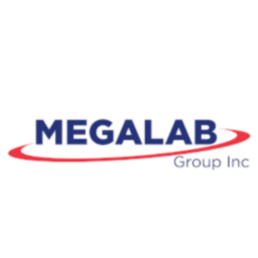The Importance of IEC 60601-1-2 Compliance for Medical Devices: When is it Useful?
In the ever-evolving landscape of medical technology, ensuring the safety and reliability of medical devices is of utmost importance. With advancements in technology and the increasing complexity of medical devices, it is crucial to adhere to international standards and regulations to guarantee the highest level of quality. One such standard that holds significant importance in the medical device industry is IEC 60601-1-2 compliance.
What is IEC 60601-1-2 compliance, you may ask? Well, it refers to the adherence of medical devices to the requirements set forth by the International Electrotechnical Commission (IEC) in the 60601-1-2 standard. This standard specifically focuses on the electromagnetic compatibility (EMC) requirements for medical electrical equipment. In simpler terms, it ensures that medical devices can function effectively and safely in their intended environment without causing or experiencing interference.
Now, you might be wondering why IEC 60601-1-2 compliance is so vital for medical devices. Let’s delve into the reasons that make it an indispensable aspect for manufacturers and healthcare professionals alike:
- Regulatory Compliance: Regulatory bodies around the world, such as the Food and Drug Administration (FDA) in the United States and the MDR in Europe, require medical devices to meet specific standards to ensure patient safety. Non-compliance can lead to severe consequences, including product recalls, legal liabilities, and damage to a company’s reputation. By adhering to IEC 60601-1-2, medical device manufacturers can demonstrate their commitment to compliance and avoid potential penalties.
- Enhanced Patient Safety: Medical devices play a critical role in patient care, and any malfunction or interference could have severe consequences. By complying with the stringent requirements of IEC 60601-1-2, manufacturers can ensure that their devices are safe to use in various clinical settings. This standard encompasses rigorous testing procedures, including susceptibility to electromagnetic fields, electrostatic discharge, and conducted/radiated emissions. By passing these tests, manufacturers can provide healthcare professionals and patients with the assurance that their devices are reliable and free from potential risks.
- Market Advantage: In today’s competitive healthcare industry, standing out from the crowd is essential. Achieving and promoting IEC 60601-1-2 compliance can give medical device manufacturers a significant advantage over their competitors. Healthcare providers and purchasing organizations often prioritize devices that meet international standards, as it reflects a commitment to quality and safety. By leveraging compliance as a selling point, manufacturers can enhance their market presence and attract more customers.
- International Acceptance: Medical device companies that aim to expand their operations globally must navigate the regulatory requirements of different countries and regions. Fortunately, IEC 60601-1-2 compliance is recognized and accepted worldwide, making it easier for manufacturers to gain market access in various jurisdictions. By obtaining compliance certification, manufacturers can streamline their international expansion efforts and avoid potential roadblocks related to differing regulatory frameworks.
- Mitigating Interference Risks: The healthcare environment is rife with electromagnetic interference sources, such as radiofrequency equipment, wireless communication devices, and electrical equipment. Without adequate protection and compliance with the IEC 60601-1-2 standard, medical devices can be vulnerable to interference, leading to inaccurate readings, device malfunction, or compromised patient safety. Compliance ensures that devices are designed and tested to withstand such interference, providing healthcare professionals with reliable and accurate data for diagnosis and treatment.
In conclusion, the importance of IEC 60601-1-2 compliance for medical devices cannot be overstated. It not only ensures regulatory compliance but also enhances patient safety, provides a competitive advantage, and enables international market access.
Got a Question?
We’re here to answer your questions and help you get started right away. Call or send us a message anytime.

Megalab Group
Megalab offers ISO 17025 A2LA Accredited, EMC, Product Safety, Mechanical & Laboratory Testing Services. Megalab Group Inc. and its team are committed to meet and exceed our customers’ expectations as an industry leader in environmental and related regulatory testing services, through constant business improvement while upholding the highest integrity and quality in standards of all services we provide.
Learn more at www.megalabinc.com



